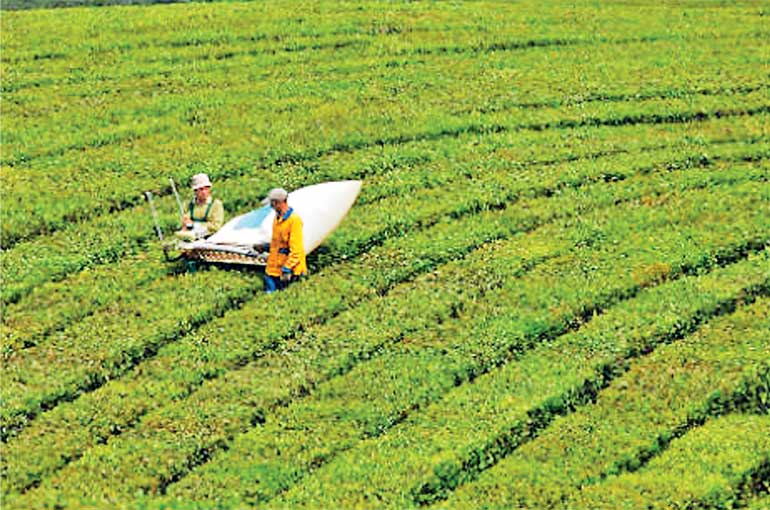Sunday Jan 18, 2026
Sunday Jan 18, 2026
Tuesday, 16 February 2016 00:37 - - {{hitsCtrl.values.hits}}
Reuters: The Black Sea resort of Sochi is known for being the host of the 2014 Winter Olympics, but domestically it’s known for something else - being the home of Russia’s only tea blend.
The history of Russian-grown tea known as Krasnodar tea dates back more than 100 years, when Ukrainian peasant Judas Koshman successfully cultivated the cold-resistant and the most northern tea blend with a strong and rich taste.
“It is the most northern tea. The weather conditions for it here are quite harsh, especially in winter and autumn. Temperatures here might drop briefly to minus 14 or 16 degrees Celsius. There are winters when snow covers them (tea plants) completely and stays there for 2-3 months. Therefore there are no (tea) diseases or insects here,” said Vladimir Voronin, chief engineer of “Matsesta Tea” company.
 Tea was first brought to Russia in the 17th century as a gift from Mongolian rulers to the Russian Tsar. But it’s real history in Russia began in the early 18th century during the rule of Peter the Great who signed trade agreement with China which resulted in a large-scale tea deliveries to Russian cities.
Tea was first brought to Russia in the 17th century as a gift from Mongolian rulers to the Russian Tsar. But it’s real history in Russia began in the early 18th century during the rule of Peter the Great who signed trade agreement with China which resulted in a large-scale tea deliveries to Russian cities.
After that, the popularity of tea in Russia grew fast and by the end of the 19th century it was one of the most popular drinks in the country and almost every household had a samovar - a metal container used to boil water for tea.
Large-scale production of tea in the Soviet Union began in the 1930s, when Krasnodar tea was cultivated on thousands of hectares of land around Sochi.
Though it remained relatively popular, it was losing competition to cheaper tea imported from India.
The fall of the Soviet Union had a negative effect on the country’s economy in general and on the production of Krasnodar tea in particular.
Krasnodar tea producers survived, only to face further crises.
 “We are living through difficult times, because in those years when our country - the Soviet Union - fell apart, agricultural enterprises have also suffered. What I meant to say - in those days those 174 hectares were handled so well that not a single bush was overgrown with weeds. Nowadays more than half of tea plantations are in bad shape because there is not enough people to work there and to use these plantations,” Voronin said.
“We are living through difficult times, because in those years when our country - the Soviet Union - fell apart, agricultural enterprises have also suffered. What I meant to say - in those days those 174 hectares were handled so well that not a single bush was overgrown with weeds. Nowadays more than half of tea plantations are in bad shape because there is not enough people to work there and to use these plantations,” Voronin said.
According to the regional authorities, 600 of 1500 hectares of tea plantations are currently abandoned and overgrown with weeds.
Tea growers are struggling to find people to work at plantations as they cannot afford to pay salaries as high as those in the tourist industry - the main source of income for the region.
The tea producers are under pressure from local authorities to maintain the plots of land they use or face huge fines.
“Dagomys and Adler (districts of Sochi) authorities are preparing to fine us for not taking care of our land properly. For each lot of land the fine is from 400.000 (rubles - 5,000USD) to 700.000. If we are fined, if we are punished financially, then we will be destroyed and never recover, because we will not be able to pay such fines. If we had that kind of money we would have invested it in roads and irrigation. With these methods the tea industry here in southern Russia will be destroyed,” Voronin said.
Unlike local authorities, residents of the Krasnodar region love their local tea and prefer it to the wide selection of imported blends.
“This tea is really good. It’s great, we know that it is organic, because we see how it grows. We drink it all the time,” said Lyubov, a Matsesta resident, after buying several jars of Krasnodar tea at a local tea shop.
In recent years, Matsesta Tea company has tried to popularise its product by launching tourist programmes, which include a visit to a factory, tea degustation and even picking tea leafs at plantation.